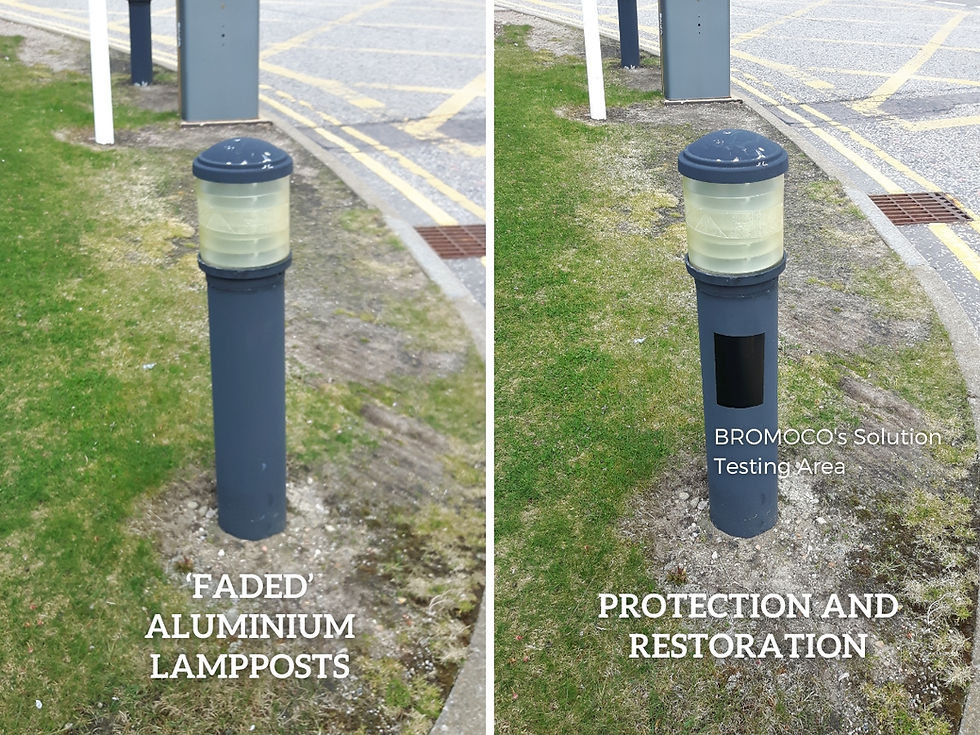Metal Surface Restoration and Long-lasting Protection for Painted Metals
- Song

- Sep 29, 2023
- 3 min read
Updated: Aug 20, 2024
In this article, we will explore the world of Metal Surface Restoration for painted metals, emphasizing the significance of their application, and comprehending the concept of Long-lasting Protection for Painted Metals. Let's uncover the secret to extending the life of your painted metals through these invaluable coatings.

Introduction
Protective coatings serve as the safeguard to ensure the longevity and durability of painted metals. Acting as a shield, they fend off a myriad of environmental factors like oxidation, fading, and corrosion. By forming this protective barrier, they effectively preserve the original brilliance and color of the metal surface for an extended duration.
These coatings offer multifaceted advantages, going beyond aesthetics. They enhance the overall performance of painted metals by thwarting rust formation, curbing wear and tear, and reducing the need for frequent maintenance or repainting.
Understanding Metal Surface Restoration
Metal Surface Restoration stands as a pivotal process in the maintenance of the appearance and lifespan of metal surfaces. Painted metals tend to lose their luster over time due to exposure to harsh environmental conditions, UV rays, and general wear and tear. The restoration of these surfaces not only revives their aesthetics but also shields them from further deterioration.
Unveiling the Restoration Process
The process of Metal Surface Restoration encompasses a series of steps aimed at restoring the original luster and color of the metal surface. It typically involves:
Surface Preparation: Adequate surface preparation is a prerequisite before embarking on any restoration work. This entails thorough cleaning of the surface to eliminate dirt, grime, and any loose paint or coatings. Surface preparation is indispensable for ensuring the proper adhesion of new coatings and achieving optimal results.
Color Matching: When restoring painted metals, precise color matching to the original hue is imperative. This may necessitate meticulous color analysis and custom mixing of paints to attain an accurate match.
Application Techniques: The application of paint or protective coatings demands skill and precision. Various techniques like brushing, spraying, or rolling are employed, contingent upon the project's size and complexity. Adherence to proper application techniques ensures an even coat and a seamless finish.
Significance of Refurbishing and Restoring Painted Metals
Refurbishing and restoring painted metals serve a multitude of purposes:
Aesthetics: Restoring the metal's luster and color augments the overall appearance of structures or objects fashioned from painted metals. Be it commercially attractive elements, architectural features, or industrial equipment, rejuvenating their sheen rekindles their original splendor.
Protection: The restoration process often entails the application of protective coatings that safeguard the metal surface against environmental factors like oxidation, fading, and corrosion. These coatings act as a barrier against moisture, UV rays, chemicals, and other detrimental elements.
Durability: By restoring painted metals, you elongate their lifespan and stave off further degradation. Regular maintenance and restoration significantly diminish the necessity for costly repairs or premature replacements in the future.
Techniques for Painted Metal Surface Restoration
To achieve optimal results in Metal Surface Restoration, specific techniques come into play:
Surface Preparation Methods: Adequate surface preparation is pivotal for successful restoration. This may entail cleaning, sanding, or stripping previous coatings to ensure a smooth and clean surface ready for painting or coating application.
Application Techniques: The choice of application technique hinges on factors such as the type of paint or coating employed, the project's size, and the desired finish. Brushing, spraying, or rolling techniques may be employed to achieve a professional-looking outcome.
Testing and Quality Control: Throughout the restoration process, regular testing and quality control checks are imperative to ascertain the correct execution of each step. This facilitates the early identification of any issues, allowing for necessary adjustments.
Next Section: Significance of Protective Coatings for Painted Metals
Understanding the process of Metal Surface Restoration and the implementation of effective techniques enable the revitalization of dulled and faded surfaces, extending their lifespan while shielding them from further harm. The next section will delve into the significance of protective coatings for painted metals, elucidating how they counteract oxidation, fading, and corrosion.











.jpg)





Comments